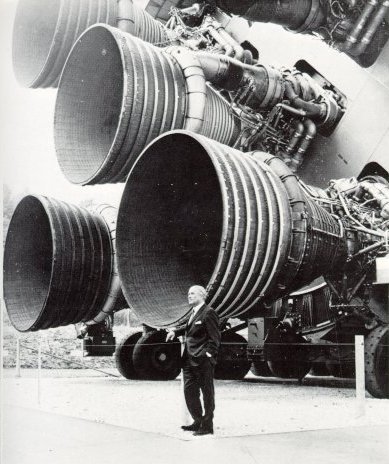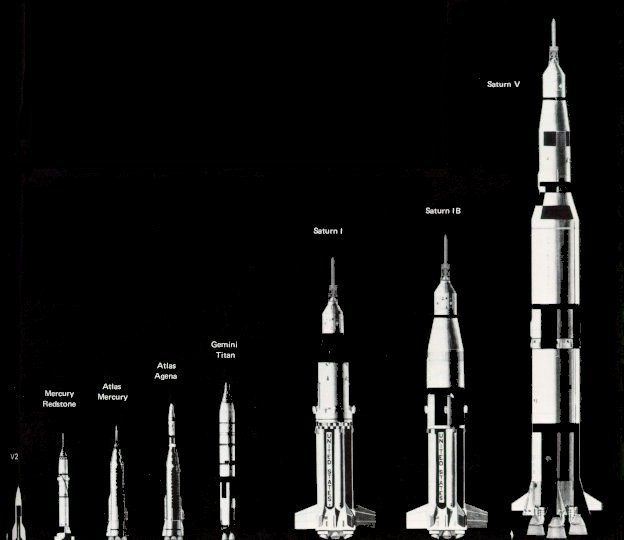















|

|
Dr. von Braun, standing
next to one of the five engines at the after end of the
Saturn V vehicle's first stage
(on display at the Alabama
Space Museum), provides a
scale reference for the humain figures shown alongside two of the rockets in
the drawing below. The sequence of launch vehicles
of ever-increasing size and
power that led from the 46-foot-high V-2 rocket through
the Mercury and Gemini
boosters to the 363-foot
Saturn V is drawn here at a single scale.
|
|
| 
| |

| The stack: the three-stage launch vehicle, Saturn V, surmounted by its payload, the Apollo spacecraft. The greater part of the launch vehicle consists of tankage for the fuel and for the oxidant, LOX (liquid oxygen), used in all three Saturn V stages. The powerful F-1 engines of the first stage burn kerosene to produce a combined thrust of 7.5 million pounds. The fuel for the J-2 engines of the two upper stages is liquid hydrogen. The combined thrust of the second stage's five engines is just over a million pounds, or five times that of the third stage's single J-2 engine. Development of the original hydrogen tanks was difficult because the low boiling point of hydrogen (-253 °C) required insulation sufficient to prevent transfer of heat from the outside and the comparatively warm (-183 °C) liquid oxygen. |


